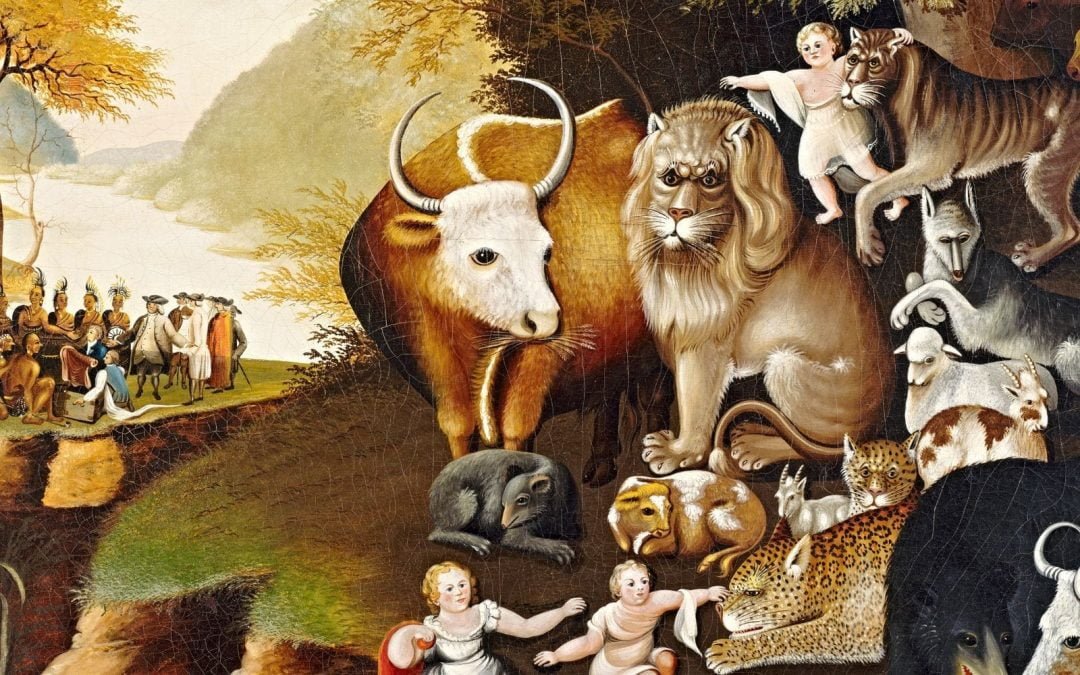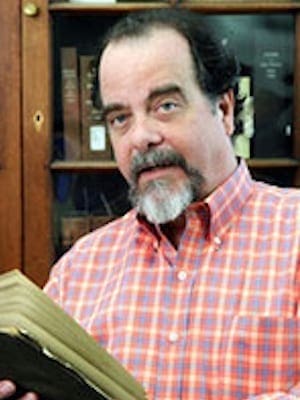Isaiah 11:1-10 offers a full, vibrant glimpse of hopes for peace, giving readers a touchstone for another Advent season where our proclamations of “peace on earth” are spoken with quivering lips and a fear that our voices will crack.
Global political strife is as high as it has been in many generations.
Mounting evidence that we have not been good stewards of the earth fan the flames – too often literally – of uncertainty and restlessness of spirit.
Hand wringing increases the anxiety, and we become vulnerable to malaise and fear in the face of our apparent impotence.
The extended metaphor of Isaiah 11:6-9 often evokes Edward Hicks’ paint-on-canvas from the early 19th century, The Peaceable Kingdoms.
And, readers and viewers of a certain age have to repress a chuckle when we remember Woody Allen’s memorable commentary on Isaiah’s hope for thoroughgoing peace: “The lion will lay down with the lamb, but the lamb won’t get much sleep.”
Follow the trajectory from the idealistic prophet to the realist comic and we might come to appreciate how Edward Hicks distinguishes the poles of idealism and realism even as he holds them together.
Hicks was born in 1780. His mother died 18 months later, and he was placed in the care of family friends who were steeped in the lifestyle and understanding of the Society of Friends in Bucks County, Pennsylvania, in the southeast corner of the state.
By the early 19th century, Hicks had embraced the Quaker view of life and officially became a Friend.
Quaker upbringing imbued Hicks with an idealistic striving for peace, community, service and simplicity.
He was drawn to life as a Quaker minister but knew that the Society of Friends expected ministers to be financially independent.
He learned the trade of making carriages and soon discovered a passion for painting them with simple folk-art themes and modest depictions of Quaker life.
All the while, HIcks dealt with his conflicts. His joy in his painting was tempered by his Quaker moral compass that frowned upon ornamentation and art for the sake of art.
He reconciled the tension by finding a balance between his life as a Quaker minister and his livelihood as a folk artist.
Often, Hicks would return to themes. He painted scenes from the life of William Penn – founder of Pennsylvania and an ardent peace-seeker with the tribes of indigenous peoples mistakenly called Indians by the colonists.
More often – 61 times in his life as a folk artist – Hicks strove to capture the idyllic and idealistic vision of Isaiah.
Over two decades, his representations became darker, reflecting his waning hope that The Peaceable Kingdom could be realized.
The older he became, the more realistic his representations of Isaiah 11 became.
Painting by painting, the reality of tooth-and-claw in the natural order crept onto the canvases.
Art historians and critics note, especially, the eyes of the animals in scope of Hicks’ The Peaceable Kingdoms.
The animals become restive and cautious. More frequently, the animals are standing rather than lying side by side.
And – on one canvas – the “little child” from Isaiah stands aggressively next to the lion, apparently restraining the lion.
Maybe Woody Allen was a prophet too.
And, then, what about us as we approach the second Sunday of Advent? The candle we will light will be blush-rose in color.
Standing between idealism and realism, maybe Edward Hicks can guide us.
According to Matthew 10:16, Jesus said, “See, I am sending you out like sheep into the midst of wolves; so be wise as serpents and innocent as doves.” He got Isaiah 11:6 right: wolves and lambs/sheep, not lions and lambs.
Let us strive to get it right too: wise and gentle. In the name of and hope for peace.
Editor’s note: This is the first article in an EthicsDaily.com series this week focused on peacemaking.


